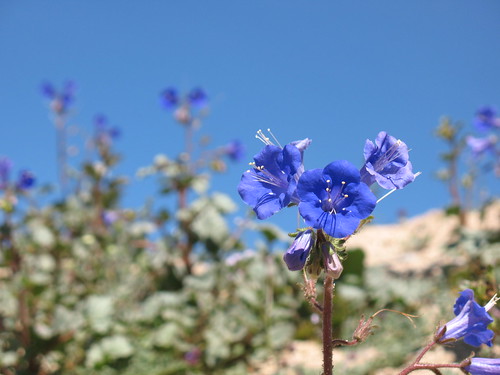
In a departure from the man-made gardens that are often the subject of this blog, this past weekend’s adventure was spent exploring the wildflower displays at two unique spots within the Mojave Desert (see here). Covering southern Nevada, western Arizona, southwestern Utah, and southeastern California, this roughly 25,000 square-mile-large swatch of land is home to hundreds of species of plants; many of which produce springtime blossoms of white, yellow, orange, red, lavender, purple, and blue.
Separated by almost 200 miles, the two unique spots included the southernmost and westernmost tips of the Mojave Desert; respectively in Joshua Tree National Park and the Antelope Valley California Poppy Reserve-both in Southern California. While the blossoms on the two parks’ namesakes-the Joshua tree (Yucca brevifolia) and California poppy (Eschscholzia californica)-were an obvious motive behind picking the locations, numerous other blossoming species also inhabit these regions.
The first stop of the adventure, Joshua Tree National Park (see here), technically spans two deserts: above 3,000 feet and on the west side of the Park is the Mojave Desert, and below on the east side is the Colorado Desert, which is part of the larger Sonoran Desert. On the border, between the two deserts, lies the Lost Palms Oasis Trail; a favorite among hikers eager to see springtime wildflower blossoms. The 7.5 mile hike takes you from the Cottonwood Spring Oasis to the Lost Palms Oasis and back. With the right amount of fall and winter rains, and warm enough springtime temperatures, the typically parched, rocky, and sandy landscape between the two oases is transformed with patches of color.
This early-April weekend, at least 20 different blossoming species were on display along the Lost Palms Oasis Trail. Most prevalent were the yellows of the Creosote Bush (Larrea tridentata), Desert Dandelion (Malacothrix californica), and Brittlebush (Encelia farinosa). Moreover, on the way to the trailhead, when driving from the north end of the Park to the south end, a wonderful highlight was the fields full of Desert Dandelion on both sides of Pinto Basin Road.
Other yellow wildflowers that lined the trail included the Checker Fiddleneck (Amsinckia tessellata), Yellow Cups (Camissonia brevipes), Bladder Pod (Isomeris arborea), and Yellowheads (Trichoptilium incisum).
While white wildflowers were not as widespread as yellow, there were four different species along the trail. The most common was the Mojave Pincushion (Chaenactis xantiana), which were in clusters at multiple places the throughout the hike. The three others were the Cheesebush (Hymenoclea salsola), Wishbone Bush (Mirabilis bigelovii), and the Desert Chicory (Rafinesquia neomexicana). Although it wasn’t near the trail, a white wildflower frequently seen along Pinto Basin Road was Jimson Weed (Datura wrightii). Since the Jimson Weed’s flowers close around midday, many of the blossoms were in a tight curl that resembled a pinwheel.
Blossoms of orange, pink, and red included those of the Desert Mallow (Sphaeralcea ambigua), Desert Mimulus (Mimulus biglovii), Hedgehog Cactus (Echinocereus engelmannii), Beavertail Cactus (Opuntia basilaris), and Ocotillo (Fouquieria spendens). A neat treat was to see a hummingbird enjoying the nectar from the red Ocotillo flower. Cacti, like the Hedgehog Cactus and Beavertail Cactus, generally don’t blossom until later in the spring. Those along the hike with blossoms also had many buds, and are likely to be quite impressive in a couple of weeks.





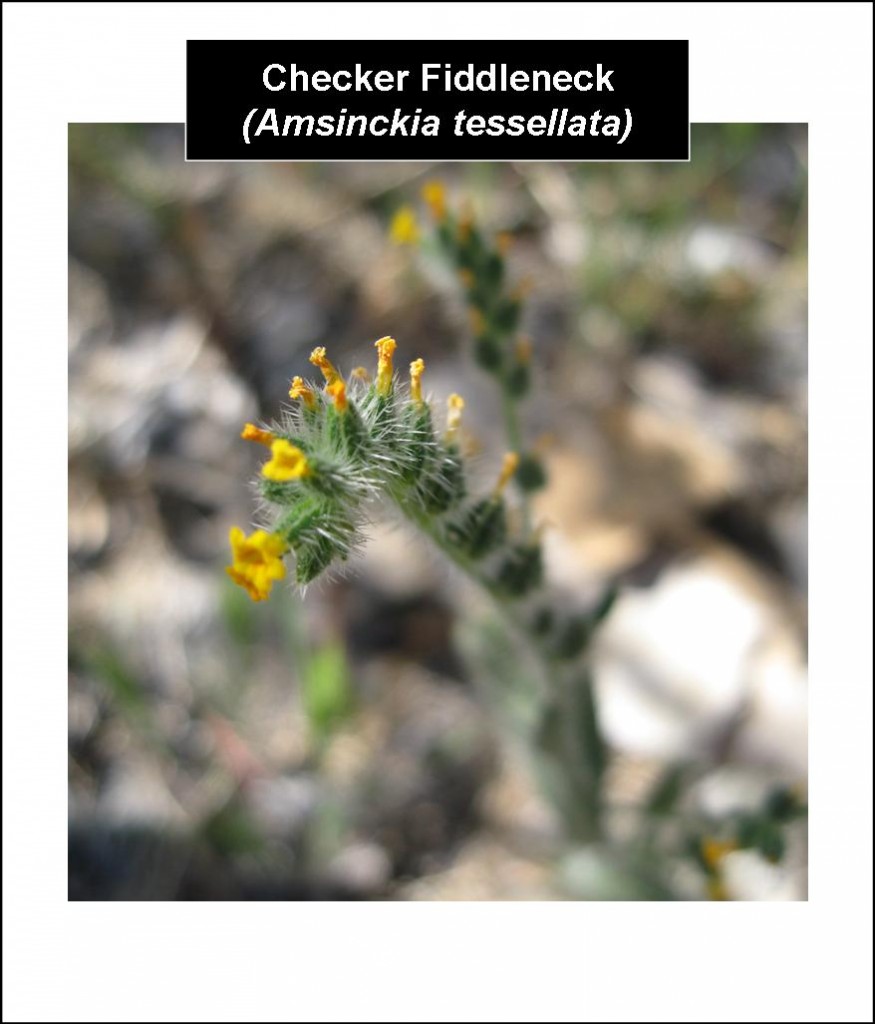
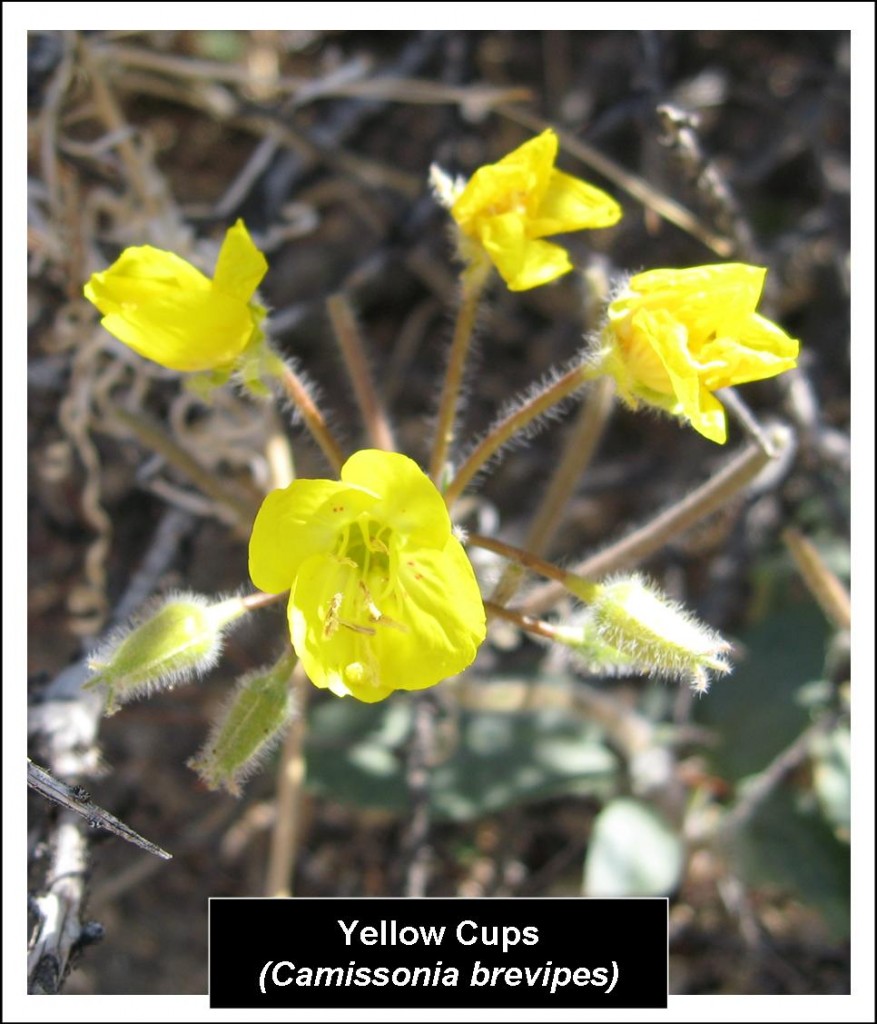

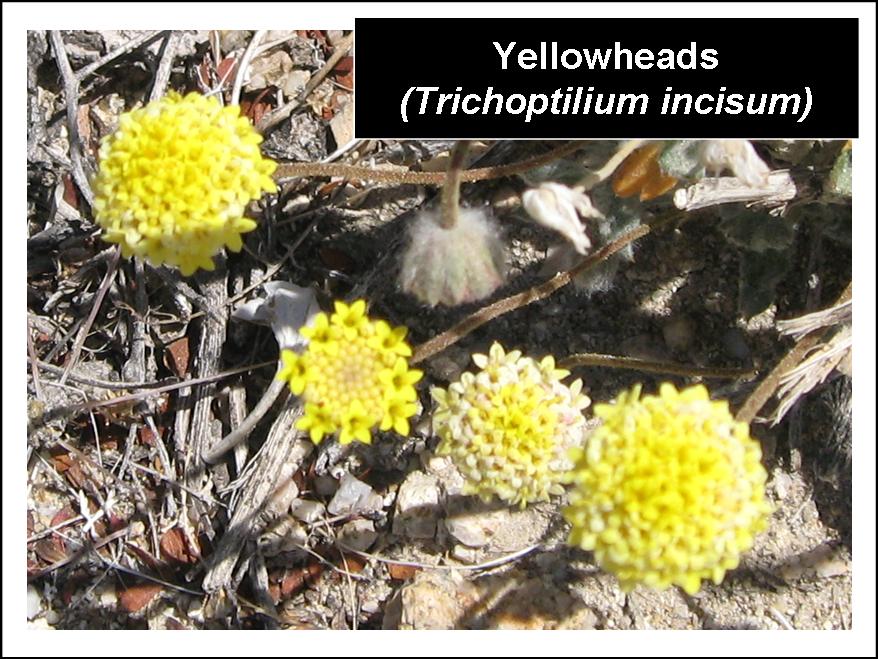

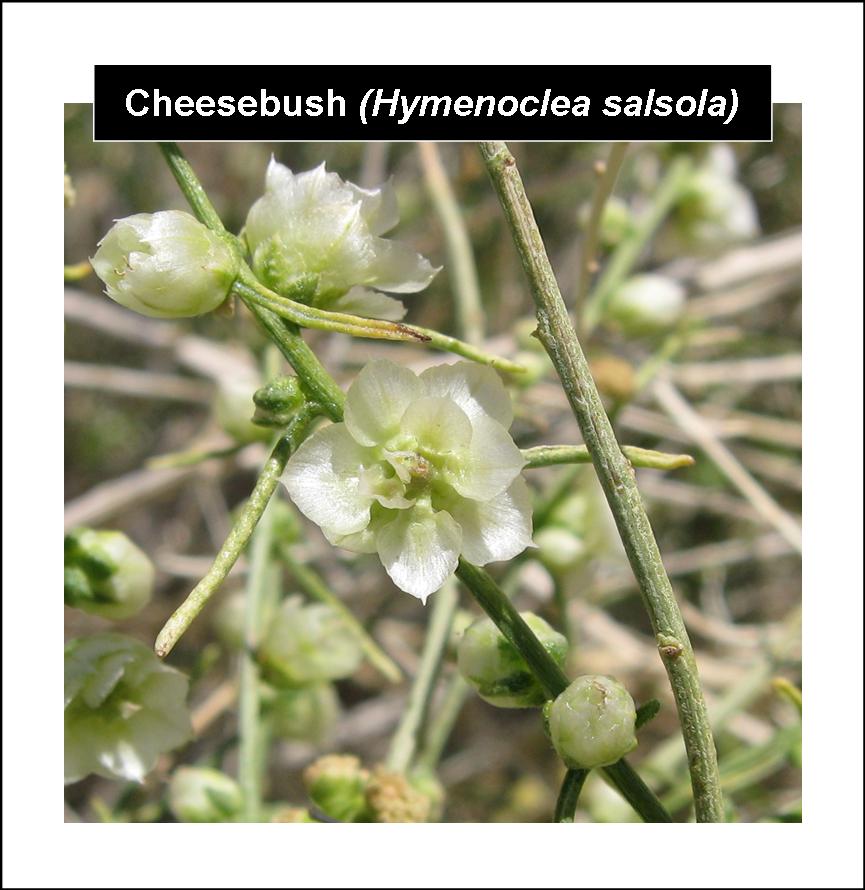
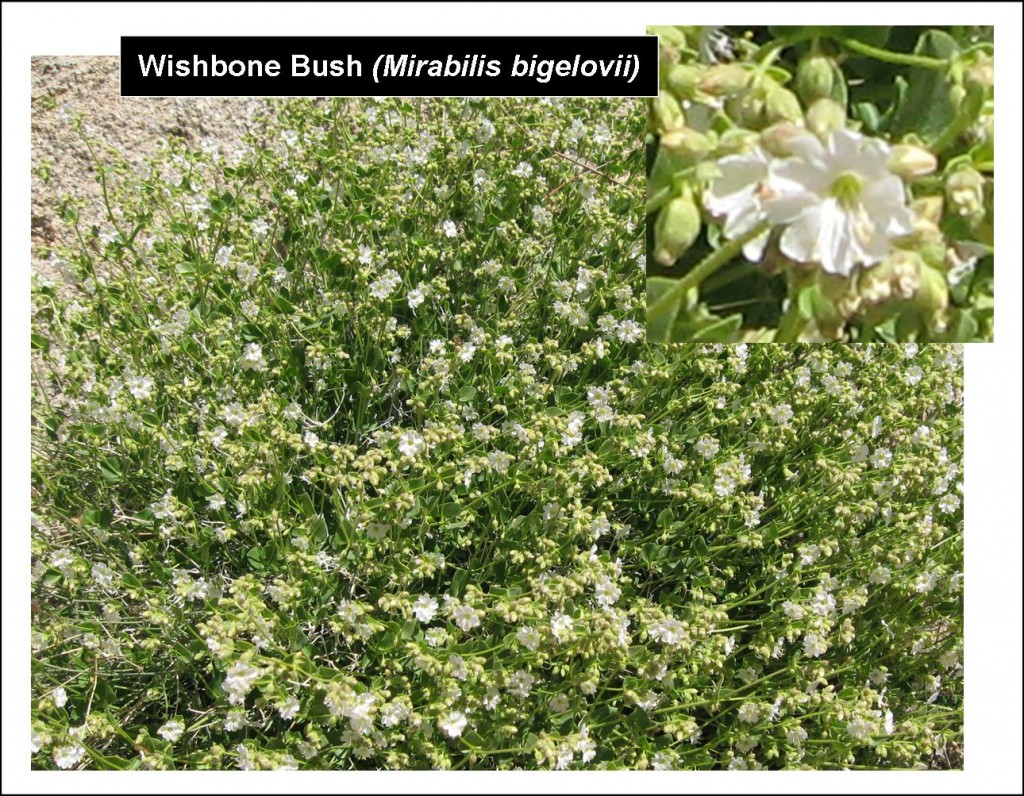


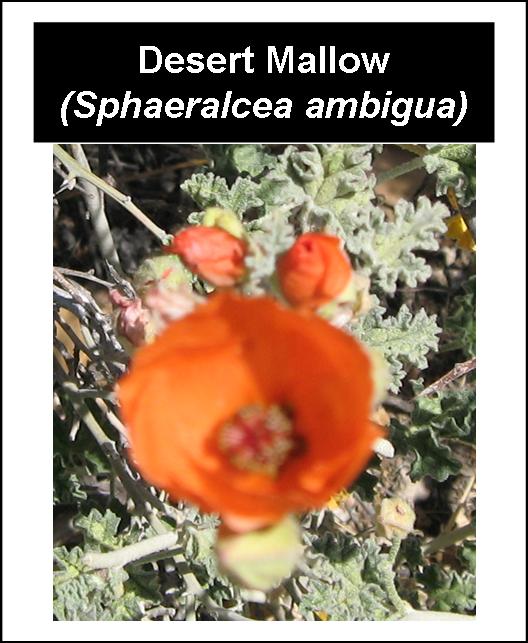



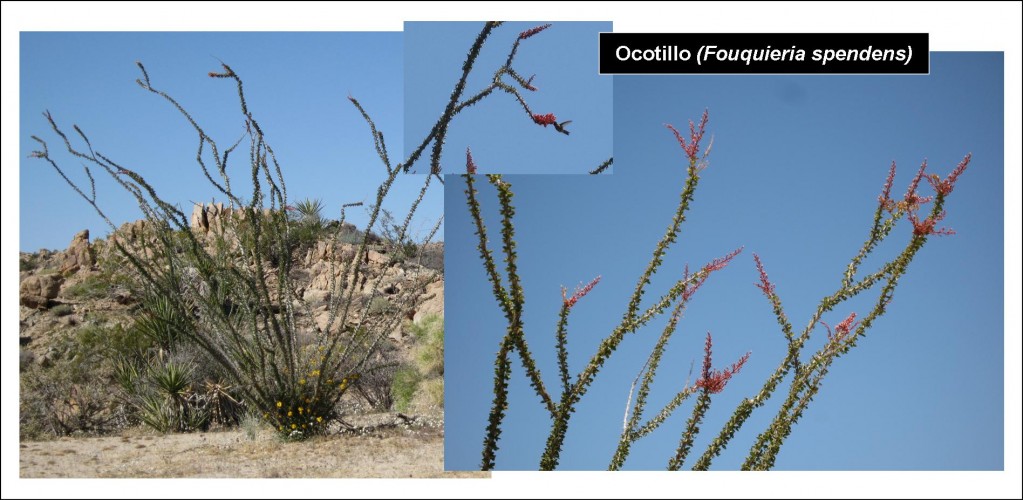
Thanks for your lovely photos; you enabled me to identify the Checker Fiddleneck, which is flowering in abundance at this time (mid-March 2010) in Sycamore Canyon County Park, Riverside, CA. I have many photos of them taken w/ a Tamron macrolens (90 mm) on a Canon EOS Digital body.